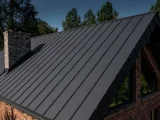The Impact of Biophilic Design on Flooring Trends in 2025
August 5, 2025Let’s be honest—2025 isn’t just another year for interior design. It’s a turning point. With urban spaces feeling more cramped than ever, people are craving nature indoors. And flooring? Well, it’s leading the charge. Biophilic design—the art of bringing the outside in—is reshaping how we walk, live, and feel in our homes and offices. Here’s how.
Why Biophilic Design Is Taking Over Flooring
You know that feeling when you step barefoot on cool grass? That’s what biophilic flooring aims to replicate—minus the dirt. In 2025, it’s not just about looks; it’s about sensory connection. Think textures mimicking river stones, colors echoing forest floors, and materials that age like natural wood. The goal? To make synthetic spaces feel… alive.
The Science Behind the Trend
Studies show that biophilic elements reduce stress by up to 15% (sorry, plain gray carpets). Our brains are wired to respond to natural patterns—fractals in wood grain, the randomness of stone. Flooring brands are leaning hard into this, with designs that trick your subconscious into feeling grounded—literally.
Top Biophilic Flooring Trends for 2025
1. “Living” Materials
Forget sterile tiles. The new stars are:
- Reclaimed wood with visible knots—flaws become features.
- Bio-resin floors—plant-based, with embedded leaves or petals.
- Moss-infused carpets (yes, real moss) for damp areas like bathrooms.
2. Texture Mapping
Ever seen a vinyl floor that feels like sand? That’s texture mapping—digital printing so precise, your toes get fooled. Brands like Interface are rolling out lines with micro-grooves mimicking tree bark or wave-smoothed pebbles.
3. Dynamic Color Palettes
Goodbye, beige. Hello, “forest-after-rain” greens and “sunbaked-clay” terracottas. Pantone’s 2025 forecasts predict earthy hues with subtle shifts—like a floor that changes tone as light moves across it.
| Trend | Example | Best For |
| Reclaimed wood | Barn oak with saw marks | Living rooms, offices |
| Bio-resin | Flaxseed-based with fern prints | Kitchens, studios |
| Moss carpets | Preserved sheet moss tiles | Bathrooms, spas |
The Challenges (Because Nothing’s Perfect)
Sure, biophilic flooring sounds dreamy—until you realize moss needs misting or reclaimed wood warps in humidity. Here’s the deal:
- Maintenance: Natural materials often need extra care. That “authentic mud-crack” tile? Sealer required weekly.
- Cost: Bio-resins cost 20-30% more than standard vinyl. But hey, can you price-tag sanity?
- Greenwashing: Some brands slap “natural” on anything brown. Look for FSC or Cradle-to-Cradle certifications.
How to Fake It (If You Can’t Go Full Forest)
Not ready to install a riverbed in your hallway? Try these shortcuts:
- Rugs with organic shapes—think amoebas, not rectangles.
- Peel-and-stick wood grain tiles for rentals.
- Sound-absorbing floors that muffle echoes like a thicket would.
The Big Picture: Flooring as Therapy
In 2025, floors won’t just hold furniture—they’ll hold attention. Hospitals are testing “pathway floors” with embedded leaves to guide patients. Schools use speckled rubber to mimic dappled sunlight. It’s flooring as a mood ring, adapting to how we need to feel.
And honestly? That’s worth stepping into.





